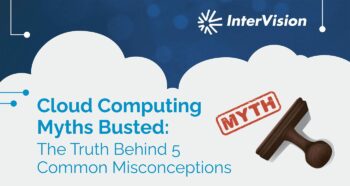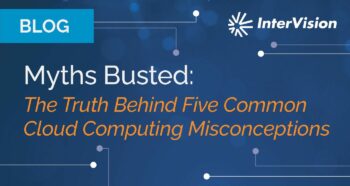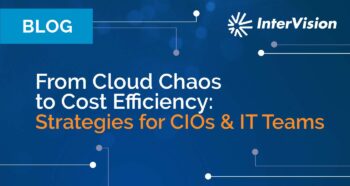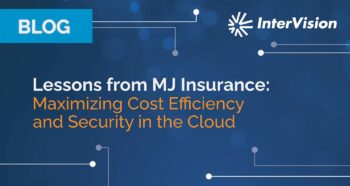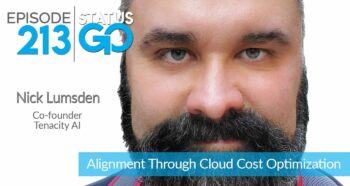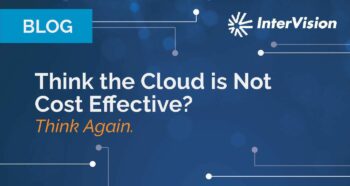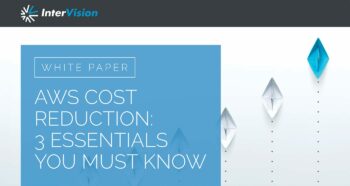You may be comparing apples to oranges!
We are busting the myths surrounding cloud computing, security, and innovation. One of the most common myths is that the cloud is more expensive than traditional on-premise solutions. There are several ways cloud computing can save businesses money in the long run. In this blog post, we will explore the ways that cloud computing can be more expensive or more cost-effective, depending on how it is implemented.
The Cloud may be more expensive
Social media and news are filled with stories of companies who migrated to the cloud, only to find their costs skyrocketed. Many of these organizations have even started “cloud repatriation,” the process of migrating cloud workloads back to on-premises infrastructure.
There are a few reasons why some companies may find that the cloud is more expensive than their on-premises architecture:
Misconfiguration or Mismanagement: Cloud infrastructure can be complex and requires expertise to manage properly. Improper configuration, management, or optimization of cloud resources can result in higher costs.
Unoptimized Resource Utilization: In a cloud environment, resources are billed on a consumption basis. If the resources are not utilized efficiently or optimized for cost savings, it can result in higher costs.
Hidden Costs: Some cloud providers may not include all the costs in their pricing models, such as data transfer fees, storage access costs, or transaction fees. These costs can add up over time and make cloud solutions more expensive than on-premises architecture.
High Data Transfer Costs: Moving data to and from the cloud can be expensive, especially if the company has large amounts of data.
Legacy Systems: Some companies may have legacy systems that are not compatible with cloud environments, which may require additional development efforts or even rebuilding applications from scratch, resulting in higher costs.
Cloud is not a one size fits all technology, nor is it for every application and use case. You must have proper planning down to the application level. Can the application run efficiently in the cloud? If not, does it need to be fully refactored, or can it be “minimally viably refactored?” There may be some applications in your portfolio that should remain on-premises until they can either be fully refactored or retired and replaced.
Cloud may appear more expensive
It is true that many times the cloud can appear more expensive than traditional on-premises solutions when looking solely at the cost of the service. However, you may be comparing apples to oranges. Here are some factors many companies leave out when comparing on-premises versus cloud that can make cloud computing appear more expensive at first glance:
Capital Expenses vs Operating Expenses: On-premises technology typically involves significant upfront costs, such as purchasing and maintaining hardware and software licenses, while cloud technology is often structured as a pay-as-you-go model, allowing businesses to pay for what they use as an operating expense. It’s essential to factor in these differences when comparing costs.
Scalability: On-premises technology may require significant upfront investments in hardware, software, and infrastructure to support scalability. In contrast, cloud technology can often scale more easily and quickly to meet the changing needs of the business.
Staffing Costs: Maintaining on-premises technology often requires specialized IT staff, which can be expensive to hire and train. Cloud technology may require fewer IT staff, as the cloud provider is responsible for managing much of the infrastructure.
Disaster Recovery and Business Continuity: On-premises technology may require additional investments in disaster recovery and business continuity planning and infrastructure, whereas cloud technology often provides built-in redundancy and disaster recovery capabilities.
Energy Costs: On-premises technology can be costly to operate and maintain, as it requires energy to power and cool servers and other infrastructure. Cloud technology may be more energy-efficient and require less ongoing maintenance and energy costs.
Security and Compliance: On-premises technology may require significant investments in security and compliance measures, such as firewalls, intrusion detection systems, and antivirus software, whereas cloud technology often includes robust security and compliance features as part of the service.
Time to Market: On-premises technology may take longer to deploy and implement, while cloud technology can often be deployed more quickly, allowing businesses to get their products and services to market faster.
When comparing the costs of on-premises technology to cloud technology, it’s essential to consider all these factors and weigh the pros and cons of each option based on the specific needs and goals of the business.
Cloud benefits outweigh cost concerns
Many times, companies fail to take into account the many benefits that cloud computing offers. These benefits can be significant to companies of all sizes.
Scalability: One key benefit of cloud computing is scalability. This means that you can easily scale up or down your resources as needed without expensive hardware upgrades or additional software licenses.
Reduced IT Costs: When you use cloud computing, you no longer need to maintain expensive hardware and software on-premise. This means you can reduce your IT costs and free up your IT staff to focus on more strategic initiatives.
Predictable Costs: With cloud computing, you know exactly how much you will be charged for the resources you use. This makes it easy to predict your costs and budget accordingly.
Innovation: Cloud computing allows businesses to experiment with new technologies and services without large upfront investments. This can help businesses stay ahead of the competition and innovate faster.
Enhanced Security: Cloud providers often have more resources and expertise to devote to security than individual businesses. This can lead to increased security and better protection against cyber threats.
Access to Enterprise Class Technology: For small businesses, this may be one of the most compelling benefits. They can take advantage of advanced technology such as machine learning, AI, and analytics.
While cloud computing can appear to be more expensive than traditional on-premise solutions at first glance, it is important to remember the many benefits that cloud computing offers. By leveraging the scalability, reduced IT costs, predictable costs, innovation benefits, and enhanced security that cloud computing provides, businesses can save money in the long run while unlocking new opportunities for growth and innovation.
Myth Busted
By working with experienced cloud providers and carefully evaluating the costs and benefits of cloud solutions, businesses can ensure that they are getting the most value from their cloud investments. Cloud computing can offer significant cost savings and operational efficiency benefits that can help businesses of all sizes, including mid-sized enterprises, save money and compete in the modern digital landscape. In addition, cloud computing provides enhanced security measures that can help protect businesses from cyber threats. If you are an IT executive, it is worth considering cloud computing as a cost-effective and efficient solution for your business needs. InterVision can help!


